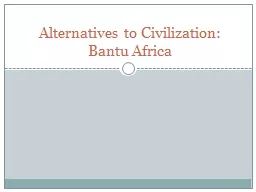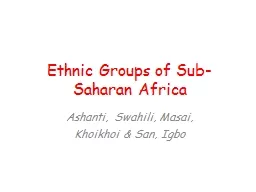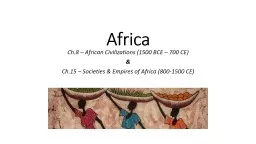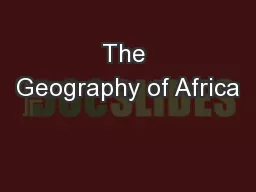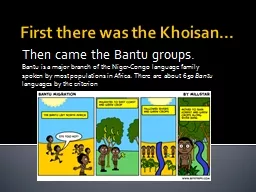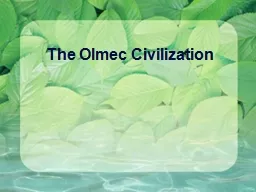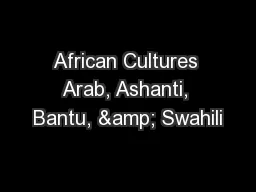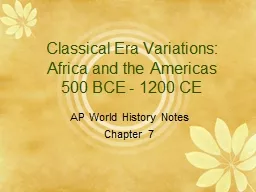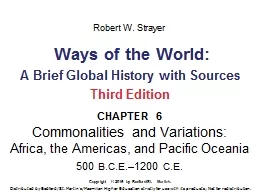PPT-Alternatives to Civilization: Bantu Africa
Author : phoebe-click | Published Date : 2018-12-07
Movement of Bantu Speaking People into Africa south of equator Began around 3000 BCE from southeastern Nigeria and the Cameroons Over time 400 distinct Bantu languages
Presentation Embed Code
Download Presentation
Download Presentation The PPT/PDF document "Alternatives to Civilization: Bantu Afr..." is the property of its rightful owner. Permission is granted to download and print the materials on this website for personal, non-commercial use only, and to display it on your personal computer provided you do not modify the materials and that you retain all copyright notices contained in the materials. By downloading content from our website, you accept the terms of this agreement.
Alternatives to Civilization: Bantu Africa: Transcript
Download Rules Of Document
"Alternatives to Civilization: Bantu Africa"The content belongs to its owner. You may download and print it for personal use, without modification, and keep all copyright notices. By downloading, you agree to these terms.
Related Documents

